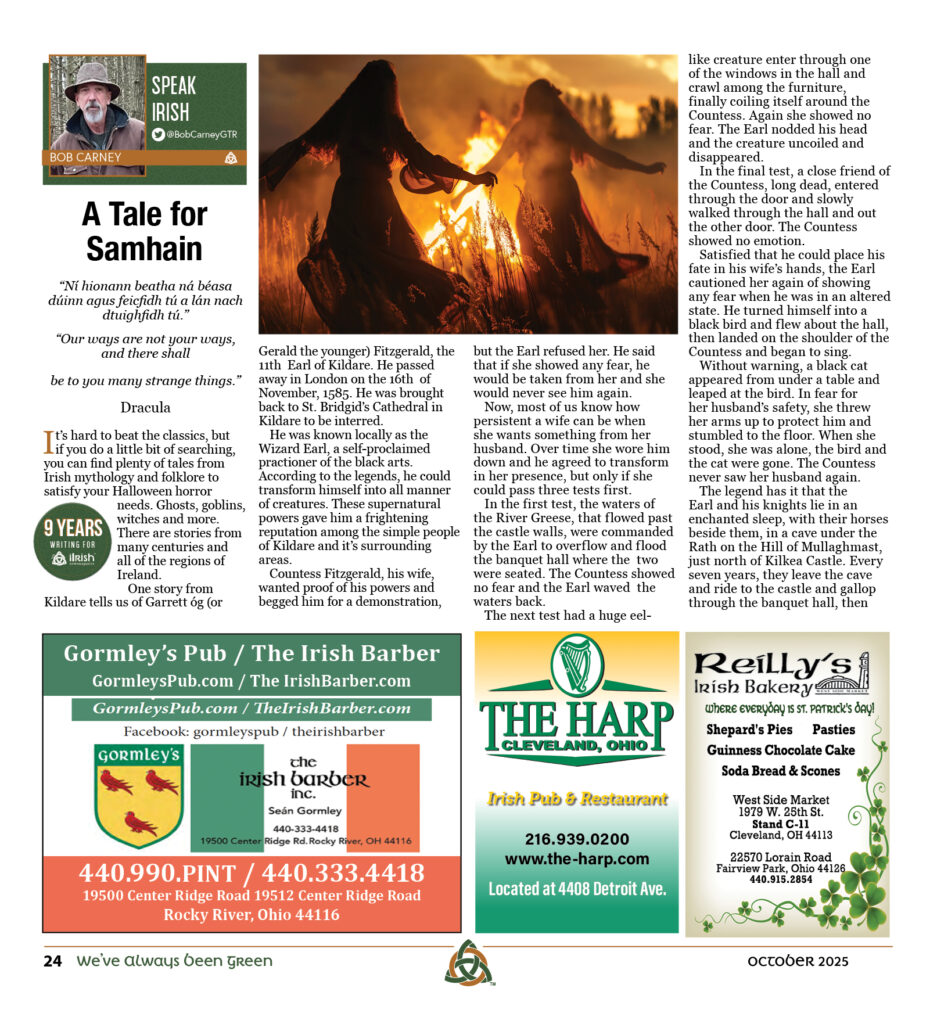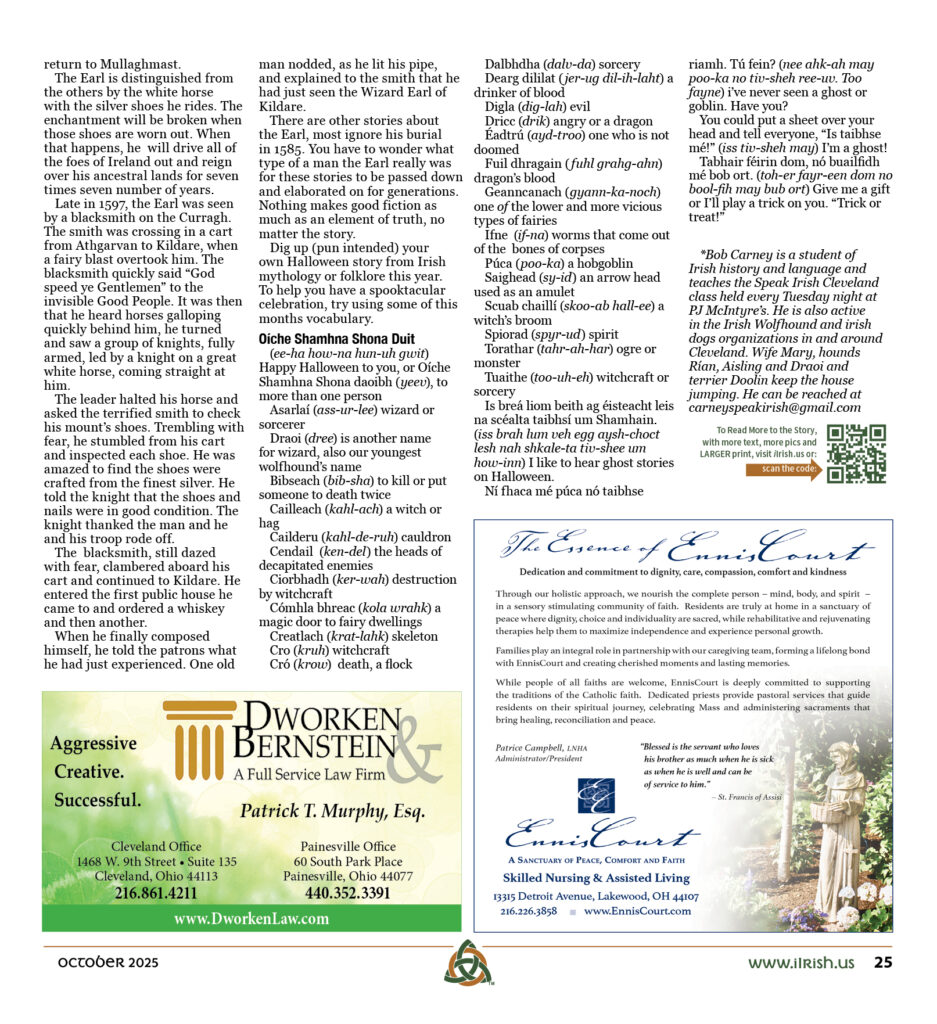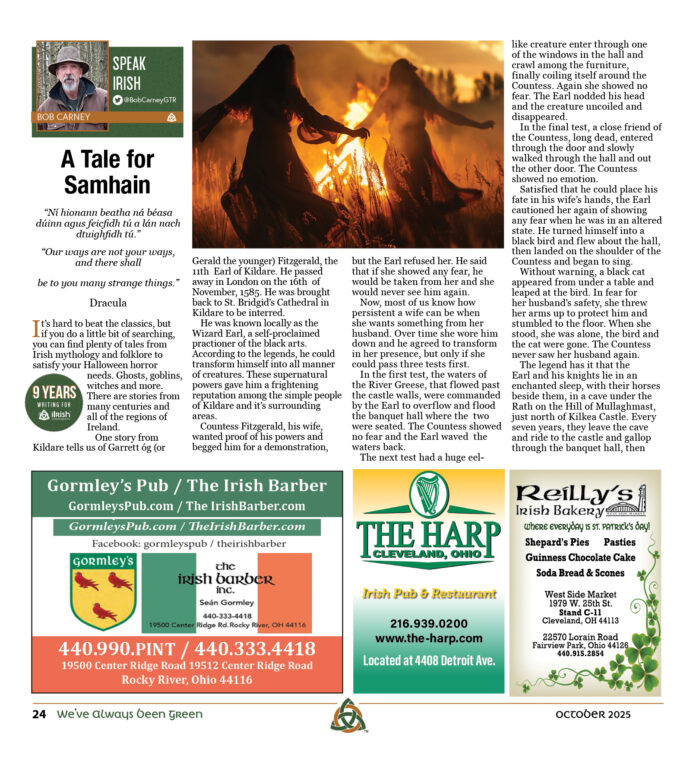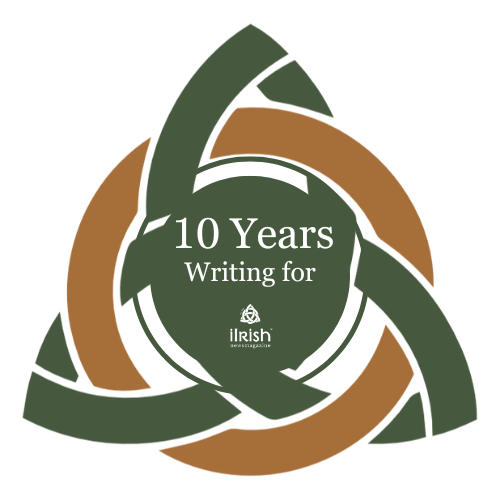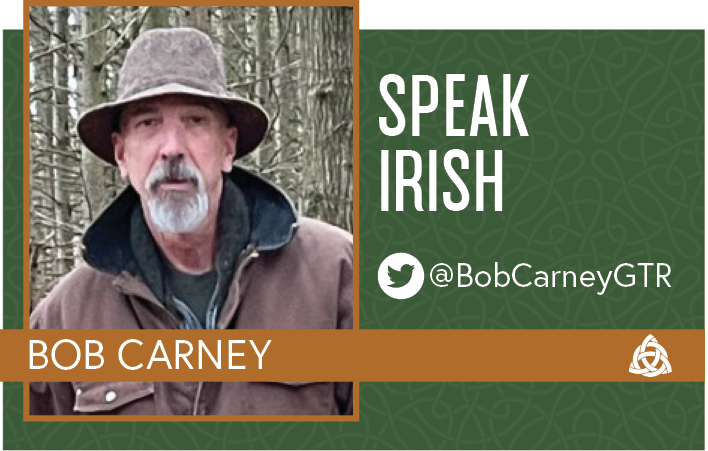
A Tale for Samhain
“Ní hionann beatha ná béasa dúinn agus feicfidh tú a lán nach dtuighfidh tú.”
“Our ways are not your ways, and there shall be to you many strange things.”
Dracula
It’s hard to beat the classics, but if you do a little bit of searching, you can find plenty of tales from Irish mythology and folklore to satisfy your Halloween horror needs. Ghosts, goblins, witches and more. There are stories from many centuries and all of the regions of Ireland.
One story from Kildare tells us of Garrett óg (or Gerald the younger) Fitzgerald, the 11th Earl of Kildare. He passed away in London on the 16th of November, 1585. He was brought back to St. Bridgid’s Cathedral in Kildare to be interred.
He was known locally as the Wizard Earl, a self-proclaimed practioner of the black arts. According to the legends, he could transform himself into all manner of creatures. These supernatural powers gave him a frightening reputation among the simple people of Kildare and it’s surrounding areas.
Countess Fitzgerald, his wife, wanted proof of his powers and begged him for a demonstration, but the Earl refused her. He said that if she showed any fear, he would be taken from her and she would never see him again.
Now, most of us know how persistent a wife can be when she wants something from her husband. Over time she wore him down and he agreed to transform in her presence, but only if she could pass three tests first.
In the first test, the waters of the River Greese, that flowed past the castle walls, were commanded by the Earl to overflow and flood the banquet hall where the two were seated. The Countess showed no fear and the Earl waved the waters back.
The next test had a huge eel-like creature enter through one of the windows in the hall and crawl among the furniture, finally coiling itself around the Countess. Again she showed no fear. The Earl nodded his head and the creature uncoiled and disappeared.
In the final test, a close friend of the Countess, long dead, entered through the door and slowly walked through the hall and out the other door. The Countess showed no emotion.
Satisfied that he could place his fate in his wife’s hands, the Earl cautioned her again of showing any fear when he was in an altered state. He turned himself into a black bird and flew about the hall, then landed on the shoulder of the Countess and began to sing.
Without warning, a black cat appeared from under a table and leaped at the bird. In fear for her husband’s safety, she threw her arms up to protect him and stumbled to the floor. When she stood, she was alone, the bird and the cat were gone. The Countess never saw her husband again.
The legend has it that the Earl and his knights lie in an enchanted sleep, with their horses beside them, in a cave under the Rath on the Hill of Mullaghmast, just north of Kilkea Castle. Every seven years, they leave the cave and ride to the castle and gallop through the banquet hall, then return to Mullaghmast.
The Earl is distinguished from the others by the white horse with the silver shoes he rides. The enchantment will be broken when those shoes are worn out. When that happens, he will drive all of the foes of Ireland out and reign over his ancestral lands for seven times seven number of years.
Late in 1597, the Earl was seen by a blacksmith on the Curragh. The smith was crossing in a cart from Athgarvan to Kildare, when a fairy blast overtook him. The blacksmith quickly said “God speed ye Gentlemen” to the invisible Good People. It was then that he heard horses galloping quickly behind him, he turned and saw a group of knights, fully armed, led by a knight on a great white horse, coming straight at him.
The leader halted his horse and asked the terrified smith to check his mount’s shoes. Trembling with fear, he stumbled from his cart and inspected each shoe. He was amazed to find the shoes were crafted from the finest silver. He told the knight that the shoes and nails were in good condition. The knight thanked the man and he and his troop rode off.
The blacksmith, still dazed with fear, clambered aboard his cart and continued to Kildare. He entered the first public house he came to and ordered a whiskey and then another.
When he finally composed himself, he told the patrons what he had just experienced. One old man nodded, as he lit his pipe, and explained to the smith that he had just seen the Wizard Earl of Kildare.
There are other stories about the Earl, most ignore his burial in 1585. You have to wonder what type of a man the Earl really was for these stories to be passed down and elaborated on for generations. Nothing makes good fiction as much as an element of truth, no matter the story.
Dig up (pun intended) your own Halloween story from Irish mythology or folklore this year. To help you have a spooktacular celebration, try using some of this months vocabulary.
Oíche Shamhna Shona Duit
(ee-ha how-na hun-uh gwit) Happy Halloween to you, or Oíche Shamhna Shona daoibh (yeev), to more than one person
Asarlaí (ass-ur-lee) wizard or sorcerer
Draoi (dree) is another name for wizard, also our youngest wolfhound’s name
Bibseach (bib-sha) to kill or put someone to death twice
Cailleach (kahl-ach) a witch or hag
Cailderu (kahl-de-ruh) cauldron
Cendail (ken-del) the heads of decapitated enemies
Ciorbhadh (ker-wah) destruction by witchcraft
Cómhla bhreac (kola wrahk) a magic door to fairy dwellings
Creatlach (krat-lahk) skeleton
Cro (kruh) witchcraft
Cró (krow) death, a flock
Dalbhdha (dalv-da) sorcery
Dearg dililat (jer-ug dil-ih-laht) a drinker of blood
Digla (dig-lah) evil
Dricc (drik) angry or a dragon
Éadtrú (ayd-troo) one who is not doomed
Fuil dhragain (fuhl grahg-ahn) dragon’s blood
Geanncanach (gyann-ka-noch) one of the lower and more vicious types of fairies
Ifne (if-na) worms that come out of the bones of corpses
Púca (poo-ka) a hobgoblin
Saighead (sy-id) an arrow head used as an amulet
Scuab chaillí (skoo-ab hall-ee) a witch’s broom
Spiorad (spyr-ud) spirit
Torathar (tahr-ah-har) ogre or monster
Tuaithe (too-uh-eh) witchcraft or sorcery
Is breá liom beith ag éisteacht leis na scéalta taibhsí um Shamhain. (iss brah lum veh egg aysh-choct lesh nah shkale-ta tiv-shee um how-inn) I like to hear ghost stories on Halloween.
Ní fhaca mé púca nó taibhse riamh. Tú fein? (nee ahk-ah may poo-ka no tiv-sheh ree-uv. Too fayne) i’ve never seen a ghost or goblin. Have you?
You could put a sheet over your head and tell everyone, “Is taibhse mé!” (iss tiv-sheh may) I’m a ghost!
Tabhair féirin dom, nó buailfidh mé bob ort. (toh-er fayr-een dom no bool-fih may bub ort) Give me a gift or I’ll play a trick on you. “Trick or treat!”
